The Cornell Lab Bird Academy › Discussion Groups › Growing Wild: Gardening for Birds and Nature › Joys of Naturescaping
-
My husband and I just moved from a large city to his family's ranch in Northeast Texas after both of us retired. The ranch has forests, hay pastures and water sources. Our home is on 1.8 acres with mostly oak and pine trees. We have one flower bed in the front of the house. We have been birders for many years and are very excited about improving what is already a good habitat for birds. We have documented over 120 species of birds on the ranch and are currently enjoying our wintering sparrows, Brown Thrashers and Ruby-crowned and Golden-crowned Kinglets among others. During recent colder weather, I started putting out Sunflower seeds as supplement for the birds. My husband gave me this course as a Christmas present and we are anxious to see what we can do to improve our space for the birds and ourselves. Supporting our year-round resident birds, in addition to the migrants, Summer nesters and Winter residents is an important goal for us as we plan our retirement activities in this beautiful place.
-
Native plantings and how flowers evolve through the seasons: May-daffodils; June-geraniums, shasta daisies; July-daylilies, coral bells, coneflowers. Would like to attract more berry-feeding birds and discourage feeding on blueberries.
-
 We have a small property in Eastern PA. Whether I realized it or not, it was the landscaping that sold me on the home when we bought it. However, I had no experience in gardening - just a love of beautiful flowers and birds inherited from my mom and the beautiful Central VA area when I grew up. Over the years I’ve grown to appreciate the value of natives and less lawn. All the stories here are so inspiring!! We added a small pond to our backyard a couple of years ago and the birds are over the moon with it. Love the little frogs that call it home too.
We have a small property in Eastern PA. Whether I realized it or not, it was the landscaping that sold me on the home when we bought it. However, I had no experience in gardening - just a love of beautiful flowers and birds inherited from my mom and the beautiful Central VA area when I grew up. Over the years I’ve grown to appreciate the value of natives and less lawn. All the stories here are so inspiring!! We added a small pond to our backyard a couple of years ago and the birds are over the moon with it. Love the little frogs that call it home too. -
We live on Bogue Banks in NC. We are working on our native plant gardening in Maritime Forest which is low light and sand. We have pots for herbs and raised bed for other food plantings. Our biggest challenge is using the outdoor space. In our area mosquitoes are present and very active 24 hours a day and about 9 months of the year. Not wanting to cover ourselves in DEET just to sit or work outside we miss a lot of the enjoyment of our yard space. Wanting to protect our bee population and insect feeding species, we do not spray our yard to control the mosquitoes. Are there any suggestions for natural mosquito controls for a mosquito challenged area like ours? Thanks and Happy Planting!
-
I live in Laramie, Wyoming - elevation 7220, zone 4 if we're lucky. We just moved into town from a prairie setting that had wonderful native birds (mountain bluebirds, goldfinches, 3 hummingbird species, tree swallows..). We are starting from scratch with a front and back yard that are mostly grass, and that we are excited to convert to pollinator and bird habitat. Audubon Rockies has a habitat hero program, which has good information for this area. Our bird feeders and bird baths are attractants for a lot of invasive bird species (Eurasian collard doves, English (aka house) sparrows, starlings), so we have realized we need to focus on habitat and food sources for the native bird species. We have mountain chickadees, red-breasted and white-breasted nuthatches, flickers, and downy woodpeckers regularly visiting. Any/all suggestions and ideas are welcome!
-
I am in Denver, and have found Audubon Cheyenne (WY) to have especially useful info and events (online recently, but maybe also in person in future). (In case you are not familiar with this resource:) If you ever drive towards Denver (but not as far south and definitely not in the urban traffic!), consider visiting High Plains Env'l Center. It's a non-profit where we can see lots of native plants that grow with very little or no water beyond precipitation. May not represent your zone optimally, but... And they sell native plants that they grow themselves. My experience with these plants is that they thrive in my yard, which has no soil amendments, little irrigation, and suburban. https://high-plains-environmental-center.square.site/ and https://suburbitat.org/ .
-
@jenifer Thanks so much for the websites. They look great. We are in Black Forest at 7300 feet in the front range so a good resource for me.
-
-
 I live near Georgian Bay in Ontario Canada. We have large gardens and lots of birds. I want to plant more native species that support bug and bird life. This will likely mean swapping out some of our plantings.
I live near Georgian Bay in Ontario Canada. We have large gardens and lots of birds. I want to plant more native species that support bug and bird life. This will likely mean swapping out some of our plantings.
-
I live in northern Virginia and have a busy bird feeder: chickadees, downy woodpeckers, tufted titmice, nuthatches, cardinals, bluebirds, a few goldfinch... And I'm the proud host of two groups of baby bluebird hatchlings for the first time this summer. I love throwing clover seed into my lawn. Most of my favorite plantings get gobbled by deer, and we have some actively-munching caterpillar varieties, too. On one side, there's a fairly busy road, so I want to plant some more plants to reduce the noise from the road and create 'quieter' areas for visiting birds.
-
I live in central Alabama, with wooded/forest on 2 1/2 sides of my back yard. I enjoy watching birds coming to my feeders. Each year I see more and more. The cardinals have homes nearby in the forest--sometimes I'll see as many as 12 (6 male/6 female). My favorite is the Carolina Wren. Also have frequent visits from Tufted Titmouse, Chickadee, and Mourning Dove. I want to grow natives that cater to the needs of birds and pollinators and use feeders more as a supplement for them. I have also created raised beds and hope to grow fruits and vegetables for myself and neighbors--see if we can co-exist.
-
We just bought our property in October and we are lucky to have a Native Plant Identification group. Since our land was "properly landscaped" to sell, it seems there are mostly invasive plants (including 2 trees) and almost all nonnatives. We have a large front yard and sizeable backyard, a long driveway with land behind it that is a new mound septic system that we would like to turn into a wildflower meadow. We also live next to and across from a wooded area. I would like the front yard to have some sitting spaces for birding and nature journaling. I would like to have some paths and garden areas sectioned off for plants and wildflowers. We get robins, woodpeckers dark-eyed juncos, white throated sparrows, some cardinals and starlings. I would like to attract hummingbirds, tufted titmouse, chickadees and cedar waxwings. I would like to see a greater variety of birds. The previous owners left a birdbath which I believe brings up water from underground but I am unsure how it works. They also left a pond kit which is not installed and am hoping to install it this spring. We have a window bird feeder but our birds are more interested in seeds I throw on the ground. I have a couple of other feeders I have yet to put out, I need a place to hang them.
-
We have a couple of acres of land in Kentucky that we are trying to increase overall biodiversity on. Some is fairly mature deciduous forest like in the picture (taken from my hammock), but much was just grassy yard. We are trying to plant native plants and replace much of the grass. I have already planted over 90 small trees and many shrubby plants as well. We are a little limited in the front yard due to our ground mounted solar array. We have several bird feeders and a river/lake at the bottom of the property. We have a good beginning but look forward to more natives in the future!

-
I live in central Virginia in the downtown area of a smaller university town. I have been on a "grass elimination" project for most of the last 18 years that I have lived here. I am blessed with an enormous oak tree that rules over the property and am now down to a tiny patch of grass, which will soon be gone. I was alerted to the importance of native plants a number of years back, but without any training I have been "winging it" reading and talking with various individuals more knowledgeable than I, all extremely well meaning, but some, like myself, not always fully informed. I finally got more deeply involved after taking a "Master Naturalist" class. This increased my understanding of both where and how to find accurate information as well as where to purchase the proper plants. I just recently began working with a local landscape architect who is quite knowledgeable (as well as kind and patient) to continue to transform the property into one hospitable to people, plant and animal life. One final note: it was suggested that I take down an Eastern Red Cedar tree on the property to permit more sunlight to penetrate the area beneath it. I said I couldn't do it, but agreed to "limb up" the tree for more light. A few days later I was sitting out in the garden reading when I suddenly noticed an enormous number of robins converge on the tree gorging on the beautiful berries. Just spectacular and all the encouragement needed to keep me learning and doing! I'm even thinking of adding a water feature (as opposed to a bath) which I have long avoided as too much maintenance. Thanks to all for your stories!
-
In my outdoor space, I garden for food, & take walks. I do some bird watching... I try to identify plants & animals that catch my attention. I want to reduce the amount of invasive plants and increase the native plants. I want more flowers & more trees that support wildlife. I want to create habitat and beauty at the same time.
-
 I just love birds when they come to visit our garden and have a sip of water.Currently we have three nests each made by different species of birds: i)Scaly breasted Munia ii)little Spiderhunter iii)Common Tailor bird . I am very happy that our garden turned out to be great for our little feathered friends .
I just love birds when they come to visit our garden and have a sip of water.Currently we have three nests each made by different species of birds: i)Scaly breasted Munia ii)little Spiderhunter iii)Common Tailor bird . I am very happy that our garden turned out to be great for our little feathered friends . -
 My front and backyard are huge, with little area that supports gardening. The area is heavily wooded, and the soil quality is not great. I do have several areas that support some gardening, almost like gardening zones. We moved here five years ago, and I am reading more and more about woodland gardening! I have been a bird feeder for over 30 years, and a gardener at least that long. For most of that time, I saw those activities are parallel, not intersecting. I have many birds visiting. The pileated woodpeckers and Stellar's jays are probably my favorites. I have lived in NJ and WA where the American Goldfinch is the state birds. I never saw one until I moved to WA, and I have dozens visiting! I feed hummingbirds year round. As I inventory my bird tools, I have: 2 seed feeders, 2 suet feeders, 3 hummingbird feeders, and 3 birdbaths. Two of the birdbaths have solar features, but my hummingbirds love to fly and linger in the hose spray when I am watering the garden!
I started thinking more about gardening for birds after the pine siskin finch swarming this winter. My area of WA State experienced extreme swarming behavior including the spread of salmonella and the death of hundreds of birds. I had never seen anything like it before, and I brought my feeders in for more than three months. I am focusing now on gardening for birds with a goal of reducing my feeder use and the risk of swarming behavior and disease spread. While the experts say that is a cyclical behavior, I do hope I don't see it again. I would like to offer more native plants and natural food for my bird visitors. I know I will also need to improve the soil in my yard to support more gardening.
My front and backyard are huge, with little area that supports gardening. The area is heavily wooded, and the soil quality is not great. I do have several areas that support some gardening, almost like gardening zones. We moved here five years ago, and I am reading more and more about woodland gardening! I have been a bird feeder for over 30 years, and a gardener at least that long. For most of that time, I saw those activities are parallel, not intersecting. I have many birds visiting. The pileated woodpeckers and Stellar's jays are probably my favorites. I have lived in NJ and WA where the American Goldfinch is the state birds. I never saw one until I moved to WA, and I have dozens visiting! I feed hummingbirds year round. As I inventory my bird tools, I have: 2 seed feeders, 2 suet feeders, 3 hummingbird feeders, and 3 birdbaths. Two of the birdbaths have solar features, but my hummingbirds love to fly and linger in the hose spray when I am watering the garden!
I started thinking more about gardening for birds after the pine siskin finch swarming this winter. My area of WA State experienced extreme swarming behavior including the spread of salmonella and the death of hundreds of birds. I had never seen anything like it before, and I brought my feeders in for more than three months. I am focusing now on gardening for birds with a goal of reducing my feeder use and the risk of swarming behavior and disease spread. While the experts say that is a cyclical behavior, I do hope I don't see it again. I would like to offer more native plants and natural food for my bird visitors. I know I will also need to improve the soil in my yard to support more gardening. -

-
My backyard is huge! I have four seed feeders spaced throughout the yard and multiple hummingbird feeders for when the birds are migrating. During bird migration, I do have a large variety of birds as well as my permanent residents. I live in North Central Texas where July and August can be dry and hot. I planted iris about 12 years ago, and while they are beautiful for about two weeks and drought resident, they don't attract wildlife. I have Turk's Cap and Trumpet Vine which the hummingbirds like and two large shade trees. There's not a specific species of bird that I want to attract. I would like to do more for the hummingbirds although they are only here about 3 months. My goal is to create a more natural environment for all my bird visitors.
-
My wife and I live in a very developed area of Long Island and we both very much appreciate nature. In our own small way we wanted to 'give back' by planting a native garden in a section of our front yard. After only two years, and being very much novices, we are already seeing the rewards of both improved aesthetics to our yard as well as drawing more birds and insect pollinators. We are definitely hooked!

-
These all look so well together! I recognize the coneflowers of course, but the others I don't. Would you kindly tell what other plants are included in this garden? Thank you!
-
-
Hello, I live in Hong Kong and a garden is something very few people have around here. But I’m doing this course to help shape the garden of my friends place where I stay about once a week. The garden is on a birdy island, borders a little forest and is on the edge of an eco system. Its very hot and tropical here, the soil is not very good to grown in but I want to find a way to attract the birds to come down.
-
living in Texas so trying to plant native that will survive our drought and then way too much rain all in the same week. We have an HOA so it is mandated that you keep 50% of your lawn. (Makes no sense to me in an area prone to drought so am working to change that.) In the meantime removing most of the grass I am allowed to. Putting in a mixture of rocks and mulch. In the mulched area I plan to plant more butterfly/bird friendly natives. In the rock areas cactus are a natural fit. I have 2 cactus gardens already that I have turned off the sprinklers in-the wrens love the cactus! I want to explore putting in some kind of water feature but it needs to be low maintenance. I have seen something at a birding area near us where it is a very thin drip line connected onto a log that does a very very slow drip onto a large rock/stone. Intriguing. What are some water features you guys have done? I have a bird bath so this doesn't need to be where they can immerse themselves but did want it to give the birds, and insects, frogs etc a place to get a drink during our hot summers and beyond. Also when its cold of course. It will be interesting to see what comes to a slow drip water feature. We live in the Central Flyway so there are quite a few migratory birds that come through. This last year I noticed quite a few different warblers so I am going to look up what sort of trees/plants they like on their way through. Any hints for me? We have a huge greenspace behind us so the forest is full of life, I would like to supplement that if I can. I look forward to your suggestions/ideas-and reading what you are doing as well. Thanks!
-
We are landscaping a steep area next to our house that was overgrown with weeds and too steep to mow. We are adding retaining walls, a patio, and steps up to the small backyard. I want the area to be pretty and relaxing. We want to design with birds and butterflies in mind, and also to put in some bushes to provide privacy from the (not very busy) road. We live in Western Massachusetts, on the edge of a very large wooded area that also includes some small ponds. We hear many kinds of birds, identifying more by their songs all the time (thanks to Merlin), but do not see as much variety as we hear. I would love to attract cedar waxwings, among others.
-
I live in New Hampshire and am new to both birding and native gardening. I became interested in birding through watching live safaris online, and they often do spots of birding. I thought, if they have such variety of birds in South Africa, all of our birds here can't just be brown and boring. So I started watching the birds in my backyard, and have really come to be amazed at the variety we do have. We have seen over 30 different types of birds, and are just getting started transforming the gardens and yard from a random mix of 'pretty plants' to a more intentional mix of natives. I am hoping to keep the good parts of our property - the woods are mostly native trees and we have a few wild growing beautiful natives, such as New Jersey Tea, that I have found - and swap non-natives in my flower beds to natives, as well as hopefully add some additional gardens along the edges of the woods which are currently lacking any understory/shrub layers. I have seen almost all of the birds that I initially had on my wish list, except for the scarlet tanager and indigo bunting. I have also added the Cedar Waxwing and Evening Grosbeak to my wish list, as well as hopefully one day starting to discern between the many types of warblers!
-
I am a beginner gardener. A lot of what I’ve done in the garden is remove bad things from the previous owners, and plunk in trees and plants. I really want a plan!

-
It already looks very beautiful and has a lot of potential!
-
-
 I love to garden and enjoy the many birds we see in our yard. I have chosen plants I like. Now I want to learn about what native plants are best for the birds. I am willing to remove plants that don’t benefit the birds and bugs and substitute native ones. I don’t use any chemicals in my yard. Many birds enjoy our pond. We keep a small section of it open in the winter too using a heater to melt the ice, and put up bird feeders. I would love to attract a wider variety of birds all year long. I like to tidy up the garden now and then, and at the end of the growing season. I’ll have to work on changing that habit too! I live in Massachusetts.
I love to garden and enjoy the many birds we see in our yard. I have chosen plants I like. Now I want to learn about what native plants are best for the birds. I am willing to remove plants that don’t benefit the birds and bugs and substitute native ones. I don’t use any chemicals in my yard. Many birds enjoy our pond. We keep a small section of it open in the winter too using a heater to melt the ice, and put up bird feeders. I would love to attract a wider variety of birds all year long. I like to tidy up the garden now and then, and at the end of the growing season. I’ll have to work on changing that habit too! I live in Massachusetts. -
This looks so lovely and peaceful. What birds do you attract to this area? While I live in WA State, I am also working toward more native plants, especially as a food source. I do have birds year round, including Anna's hummingbirds. Do you have any bird feeders?
-
-
We use our outdoor space for growing food, for walking and enjoy nature, and for viewing from inside. Sometimes we have events outside like the wedding a few weeks ago. We would also like to have a walking path through the woods. We like that this is our space to create. We have never owned our home before. I like the trees and the sounds of birds, I like the plants 🌱 that surprised me with the coming seasons. changing the space; I would like to grow more food for me and for the birds, I would like to know the plants and birds that are present and bring in some plants that would bring beauty and nourishment for the soul.
-
I have been gardening for wildlife for over 10 years. It has been more and more fulfilling each year. I've been seeing a greater diversity, as well as greater numbers of birds as I improve the sanctuary. I have learned a great deal and continue to learn. I have created a hummingbird courtyard garden, a large native prairie garden and an open woodland look to the front yard. I am still working on getting rid of lawn in the front yard and adding native plants. I live in southeastern Michigan, so the red bud trees, red twig dogwoods, elderberry and serviceberry bushes that I had planted are native to my area. I planted large masses of wild geraniums and blue bells under a hickory tree and mayapples under pine trees. I planted a dozen purple coneflowers out in full sun around the mailbox. In particular, I’d like to get rid of the rest of the lawn and plant native groundcovers around the red bud trees and the berry bushes. I participated in Project Feeder Watch this past year, so I set out more bird feeders. I enjoyed working for PFW a great deal and see a lot more birds around our home. One of my favorite times was in late spring, with the stunning arrival of a small flock of Baltimore orioles in my back yard. Other highlights that stood out from the usual ‘backyard birds’ were a pileated woodpecker, pair of rose-breasted grosbeaks, and a pair of mallards. We have a small pond area that I’d like to make more attractive to the ducks, who unfortunately left after staying a few weeks in late spring. My favorite place to spend time is in the hummingbird courtyard. I love waking up in the morning with a cup of coffee, watching the hummingbirds!
Read More:
 We have a small property in Eastern PA. Whether I realized it or not, it was the landscaping that sold me on the home when we bought it. However, I had no experience in gardening - just a love of beautiful flowers and birds inherited from my mom and the beautiful Central VA area when I grew up. Over the years I’ve grown to appreciate the value of natives and less lawn. All the stories here are so inspiring!! We added a small pond to our backyard a couple of years ago and the birds are over the moon with it. Love the little frogs that call it home too.
We have a small property in Eastern PA. Whether I realized it or not, it was the landscaping that sold me on the home when we bought it. However, I had no experience in gardening - just a love of beautiful flowers and birds inherited from my mom and the beautiful Central VA area when I grew up. Over the years I’ve grown to appreciate the value of natives and less lawn. All the stories here are so inspiring!! We added a small pond to our backyard a couple of years ago and the birds are over the moon with it. Love the little frogs that call it home too. 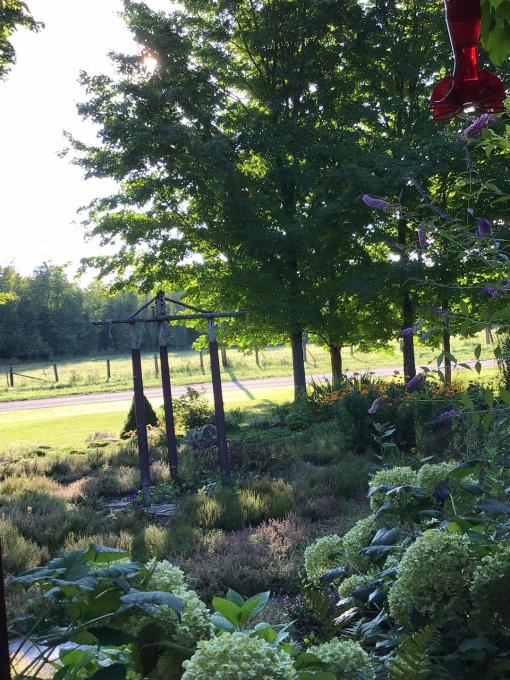 I live near Georgian Bay in Ontario Canada. We have large gardens and lots of birds. I want to plant more native species that support bug and bird life. This will likely mean swapping out some of our plantings.
I live near Georgian Bay in Ontario Canada. We have large gardens and lots of birds. I want to plant more native species that support bug and bird life. This will likely mean swapping out some of our plantings.
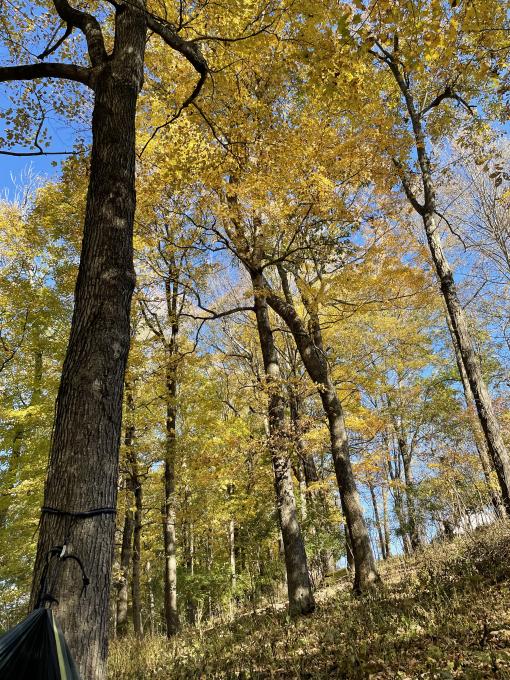
 I just love birds when they come to visit our garden and have a sip of water.Currently we have three nests each made by different species of birds: i)Scaly breasted Munia ii)little Spiderhunter iii)Common Tailor bird . I am very happy that our garden turned out to be great for our little feathered friends .
I just love birds when they come to visit our garden and have a sip of water.Currently we have three nests each made by different species of birds: i)Scaly breasted Munia ii)little Spiderhunter iii)Common Tailor bird . I am very happy that our garden turned out to be great for our little feathered friends . 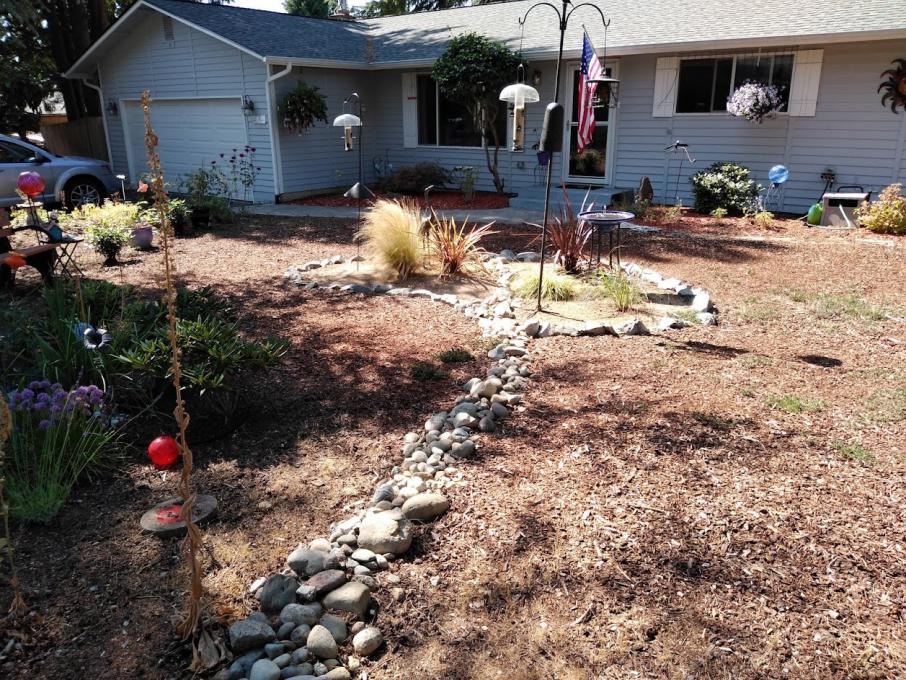 My front and backyard are huge, with little area that supports gardening. The area is heavily wooded, and the soil quality is not great. I do have several areas that support some gardening, almost like gardening zones. We moved here five years ago, and I am reading more and more about woodland gardening! I have been a bird feeder for over 30 years, and a gardener at least that long. For most of that time, I saw those activities are parallel, not intersecting. I have many birds visiting. The pileated woodpeckers and Stellar's jays are probably my favorites. I have lived in NJ and WA where the American Goldfinch is the state birds. I never saw one until I moved to WA, and I have dozens visiting! I feed hummingbirds year round. As I inventory my bird tools, I have: 2 seed feeders, 2 suet feeders, 3 hummingbird feeders, and 3 birdbaths. Two of the birdbaths have solar features, but my hummingbirds love to fly and linger in the hose spray when I am watering the garden!
I started thinking more about gardening for birds after the pine siskin finch swarming this winter. My area of WA State experienced extreme swarming behavior including the spread of salmonella and the death of hundreds of birds. I had never seen anything like it before, and I brought my feeders in for more than three months. I am focusing now on gardening for birds with a goal of reducing my feeder use and the risk of swarming behavior and disease spread. While the experts say that is a cyclical behavior, I do hope I don't see it again. I would like to offer more native plants and natural food for my bird visitors. I know I will also need to improve the soil in my yard to support more gardening.
My front and backyard are huge, with little area that supports gardening. The area is heavily wooded, and the soil quality is not great. I do have several areas that support some gardening, almost like gardening zones. We moved here five years ago, and I am reading more and more about woodland gardening! I have been a bird feeder for over 30 years, and a gardener at least that long. For most of that time, I saw those activities are parallel, not intersecting. I have many birds visiting. The pileated woodpeckers and Stellar's jays are probably my favorites. I have lived in NJ and WA where the American Goldfinch is the state birds. I never saw one until I moved to WA, and I have dozens visiting! I feed hummingbirds year round. As I inventory my bird tools, I have: 2 seed feeders, 2 suet feeders, 3 hummingbird feeders, and 3 birdbaths. Two of the birdbaths have solar features, but my hummingbirds love to fly and linger in the hose spray when I am watering the garden!
I started thinking more about gardening for birds after the pine siskin finch swarming this winter. My area of WA State experienced extreme swarming behavior including the spread of salmonella and the death of hundreds of birds. I had never seen anything like it before, and I brought my feeders in for more than three months. I am focusing now on gardening for birds with a goal of reducing my feeder use and the risk of swarming behavior and disease spread. While the experts say that is a cyclical behavior, I do hope I don't see it again. I would like to offer more native plants and natural food for my bird visitors. I know I will also need to improve the soil in my yard to support more gardening. 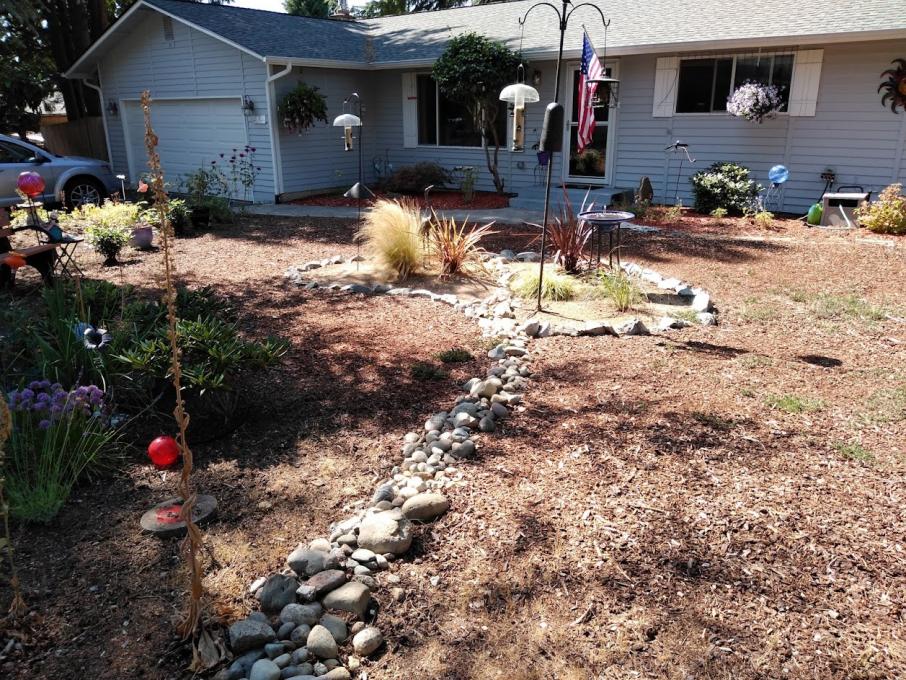
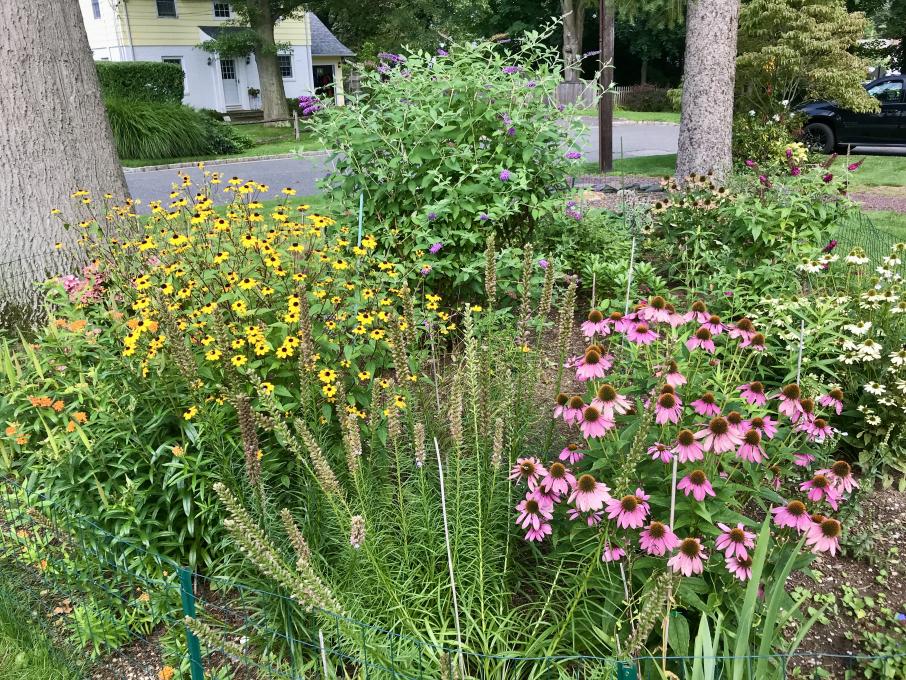

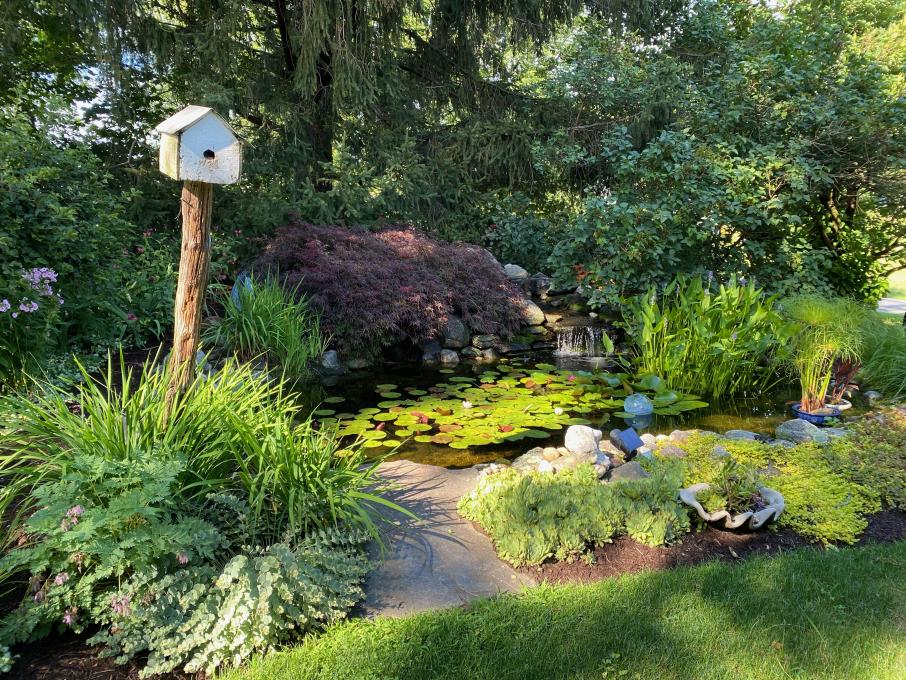 I love to garden and enjoy the many birds we see in our yard. I have chosen plants I like. Now I want to learn about what native plants are best for the birds. I am willing to remove plants that don’t benefit the birds and bugs and substitute native ones. I don’t use any chemicals in my yard. Many birds enjoy our pond. We keep a small section of it open in the winter too using a heater to melt the ice, and put up bird feeders. I would love to attract a wider variety of birds all year long. I like to tidy up the garden now and then, and at the end of the growing season. I’ll have to work on changing that habit too! I live in Massachusetts.
I love to garden and enjoy the many birds we see in our yard. I have chosen plants I like. Now I want to learn about what native plants are best for the birds. I am willing to remove plants that don’t benefit the birds and bugs and substitute native ones. I don’t use any chemicals in my yard. Many birds enjoy our pond. We keep a small section of it open in the winter too using a heater to melt the ice, and put up bird feeders. I would love to attract a wider variety of birds all year long. I like to tidy up the garden now and then, and at the end of the growing season. I’ll have to work on changing that habit too! I live in Massachusetts.